When you need a break from eating and drinking all the wonderful Langhe cuisine, here is a suggestion for a few mini-excursion; go visit one of the well restored castles in Cuneo province.
My castle top picks in the Cuneo region are: Castello Roccolo di Busca, Castello Reale di Carlo Felice di Govone and Castello Reale di Racconigi.
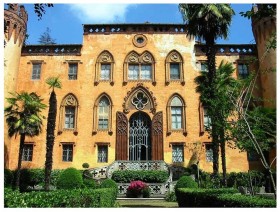
Castello Roccolo di Busca is located a bit over 30min by car from TorreBarolo and transports one from the rolling vine covered hills of the Langhe to the fruit orchards of the Cuneo valley, the region’s capital.
The castle is named after the nets used to catch small birds called “roccoli”. The castle has quite an impressive past having hosted such famous and noble individuals as the famous Italian writer, Silvio Pellico, King Umberto I and Queen Margherita. What I enjoy about the castle is it the neo-Gothic style, which was the fashion around Saluzzo in the mid 1800’s as well as favoured by the Savoy court. The exterior of the castle combines Moorish arches, rose windows and many floral features. 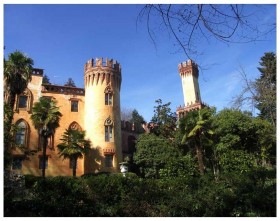
Surrounding the castle is a very large, peaceful and lush park, designed in a Romantic style that contains many paths, look out points and peaceful corners.
Tours are available and access many of the rooms in the main building before continuing to the monumental conservatory and then into the gardens.
Although the town of Busca is not on my “must see list” after touring the castle you are only 20mins from Saluzzo or else if you want to cool off in the Alps, one can head into the Upper Maira Valley where one can find woods and walking trails, a paradise for hikers and mountain bikers.
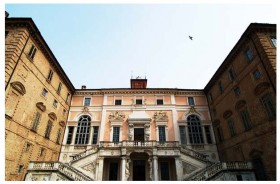 Castello Reale di Carlo Felice di Govone is located 30mins from Barolo in the hilltop town of Govone, which easily can be reached from the autostrada direction Asti.
Castello Reale di Carlo Felice di Govone is located 30mins from Barolo in the hilltop town of Govone, which easily can be reached from the autostrada direction Asti.
The castle is mentioned in a bill of sale from 989 when it was likely a very medieval structure typical of the Monferrato fortresses, but the current structure is the result from a major rebuilding effort carried out in the 13th century by the Solaro counts, including Count Giuseppe Roberto Solaro.
The castle exchange hands many time in the 1800’s to finally be acquired by the Ovazza Segre family who handed it over to the municipal government in 1897.
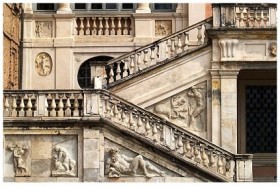 In 1997, UNESCO designated it a World Heritage Sites. A series of careful restoration works are returning the castle to its original splendour, within the splendid setting of its vast park.
In 1997, UNESCO designated it a World Heritage Sites. A series of careful restoration works are returning the castle to its original splendour, within the splendid setting of its vast park.
The castle is an imposing brick structure with a façade rich in decoration and sculptures. The whole building is bordered to the north and west by a vase English style garden and to the east bygarden of fountains, trees and flowerbeds.
Castello Reale di Racconigi is located 40min north of Barolo, exit the A6 direction Torino at Carmagnola. It is considered “a must see” of the royal Savoy residences.
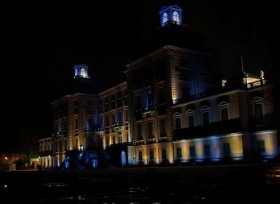 The castle was originally built as a mighty military fortress at the end of the 12th century/beginning of the 13th century by the marquises of Saluzzo. After exchanging hands many times, it was then in the 16th century the Savoys transformed it from a fortress into a residence by Prince Emanuele Filiberto Amedo, then heir to the throne of Savoy.
The castle was originally built as a mighty military fortress at the end of the 12th century/beginning of the 13th century by the marquises of Saluzzo. After exchanging hands many times, it was then in the 16th century the Savoys transformed it from a fortress into a residence by Prince Emanuele Filiberto Amedo, then heir to the throne of Savoy.
During the Jacobin revolts of the late 18th century the castle suffered occupation and the confiscation of goods by the French troops, but after a period disuse, it returned to the Savoy family, more specifically, Charles Albert who had the architect Palagi oversee the refurbishment and also was responsible for works on the park, which he designed in English neo-Gothic style.
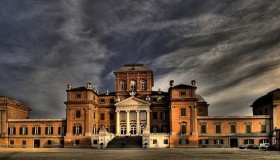 When the capital of Italy was moved from Turin to Rome, the castle was a favorite residence of the royal family and was used as a summer residence during the mid-1800s. The castle’s last owner was Umberto II, who received it from Victor Emanuel III as a wedding gift.
When the capital of Italy was moved from Turin to Rome, the castle was a favorite residence of the royal family and was used as a summer residence during the mid-1800s. The castle’s last owner was Umberto II, who received it from Victor Emanuel III as a wedding gift.
The castle is noteworthy for its majestic architecture as well as its varied interior which contain different periods and styles of woodwork, painting, stucco etc. It is admired for retaining the atmosphere of a house that documented the lifestyle of 19th and 20th century royal family.
The public can visit the first and second floors, the kitchens and the park.
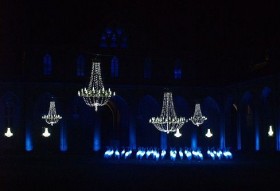 The castle is open from 9-18:30 Tuesday to Sunday. Tickets are €5. The park at the castle is open Tuesday to Sunday from 10-19 and tickets for access to the garden are €2.
The castle is open from 9-18:30 Tuesday to Sunday. Tickets are €5. The park at the castle is open Tuesday to Sunday from 10-19 and tickets for access to the garden are €2.
There is a cafeteria to enjoy refreshments.
These 3 are part of an initiative called Castelli Aperti (Open Castles) that open to the public from May until October 90 historical residences that otherwise would be hard to access as many are privately owned.
The Castello Del Roccolo di Busca is open April 5th – October 31st, though closed in August. Check this website below for opening hours but generally from 14:30 to 19:00. Entrance is €5.
Castles of Piemonte: here you can find many more beautiful pictures of our favourite castles in Piemonte.
CASTELLO DEL ROCCOLO DI BUSCA
Frazione San Quintino, 17
12022 Busca (CN)
Tel: +39 0171 618260
Email: zelda.beltramo@marcovaldo.it
CASTELLO REALE DI CARLO FELICE DI GOVONE
Piazza Roma, 1
12040 Govone (CN)
Tel: +39 0173 58103
Email: segreteria@comune.govone.cn.it
CASTELLO REALE DI RACCONIGI
Via Morosini, 3
12035 Racconigi (CN)
Tel: +39 0172 84005
Email: comunica@castellodiracconigi.org
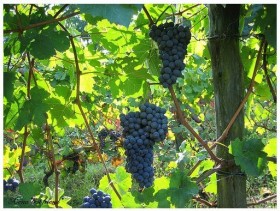
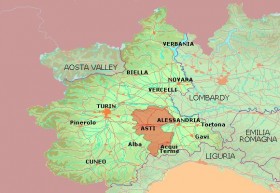 Like so many Italian red wines, except its powerhouse big brothers Barbaresco and Barolo, a Barbera has that tart, light, berry-like flavor and a texture that seems a little grainy and rough, as if a few seeds of a fresh raspberry had found their way into the bottle and added their own little interesting zip there.
Like so many Italian red wines, except its powerhouse big brothers Barbaresco and Barolo, a Barbera has that tart, light, berry-like flavor and a texture that seems a little grainy and rough, as if a few seeds of a fresh raspberry had found their way into the bottle and added their own little interesting zip there. 









